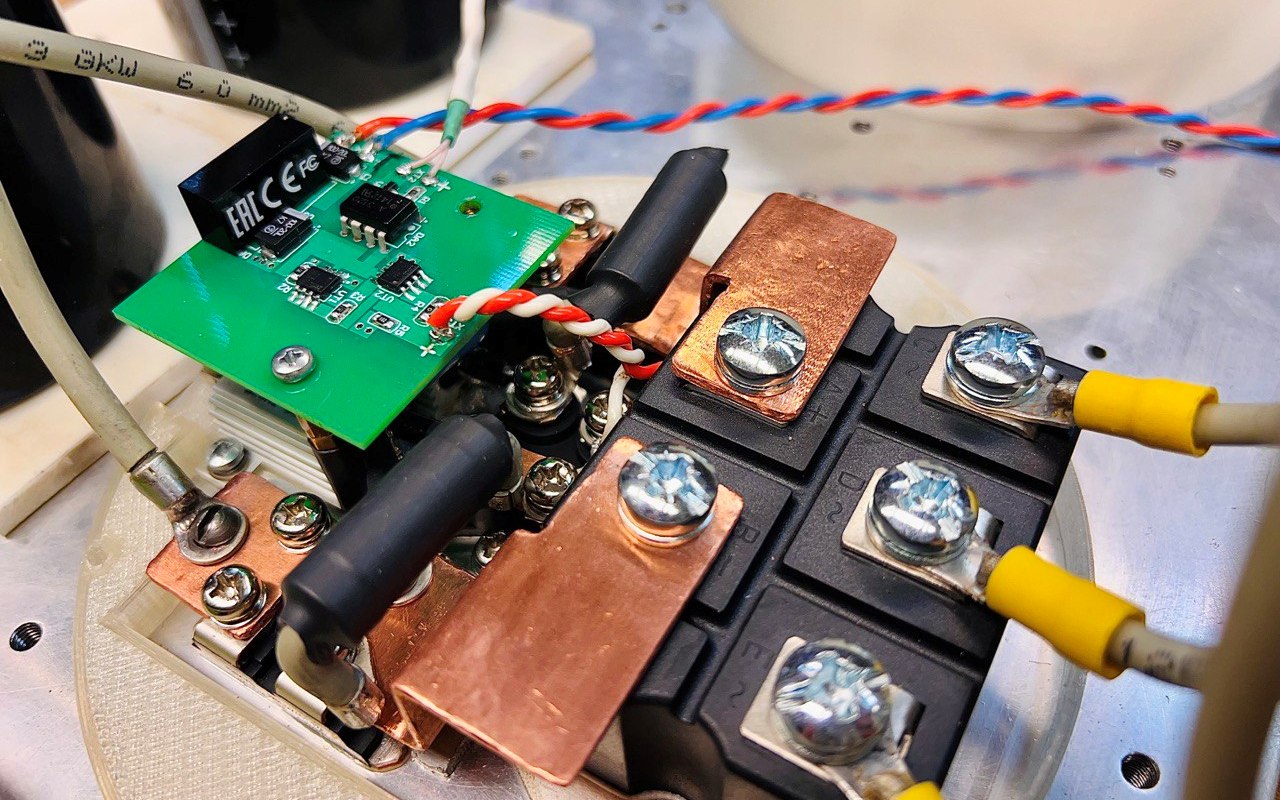Cryogenic electronics: MAI scientists developed powerful and compact rectifier

Modern energy systems cannot be imagined without powerful electronic converters. At the same time, the requirements in terms of mass-energy indicators are constantly increasing. It is possible to solve the problem by significantly intensifying cooling. For example, using cryogenic refrigerants such as liquefied natural gas, liquid nitrogen, neon, hydrogen and others.
Moscow Aviation Institute has extensive experience in creating cryogenic cooling devices, including those using high-temperature superconductors. A team of scientists from the NIO-310 decided to apply this experience to cool power semiconductors. The use of such devices in transport and energy systems operating with the use of various cryogenic refrigerants is especially relevant. These are gas-carrying ships, gas-turbine locomotives, turbo-expander generators and passenger aircraft with a hybrid power plant.
This direction is new in the world practice and requires a large amount of research. MAI scientists have performed a number of experiments to study the electrical properties of power electronic components at cryogenic temperatures. Unique data on the characteristics of components in the temperature range from −200C to +25C were obtained.
Master's degree student Alexey Alekseev, postgraduate student Mikhail Ostapchuk, Doctor of Technical Sciences, Professor of Department 310 Daniil Shevtsov, researcher, Candidate of Technical Sciences Sergey Zanegin perform this work. The direction is headed by Candidate of Technical Sciences, Associate Professor Dmitry Shishov. The project is being implemented with the support of the Ministry of Education and Science of the Russian Federation.
Based on the data obtained, a demonstrator of a controlled rectifier device with cryogenic cooling of the power cascade was designed and manufactured. This device is designed to work as part of a system in which it will connect a superconducting generator and a load and provide voltage stabilization and regulation. The development has such characteristics as the ability to work effectively at extremely low temperatures, potentially lower weight, smaller dimensions.
− The possibilities of cryogenic cooling in power electronics are very little studied. First of all, this is due to the fact that there are no manufacturers producing electronic components with a temperature range of operation below -60C. That is why we did not just develop the device, but also tested the electronic components at temperatures from − 200C to +25C and determined their characteristics at the preliminary stage. This allowed us to choose the right components for use in the device, − says the head of the direction Dmitry Shishov.
Power electronic units can have a significant mass and size due to high power. The use of refrigerants available in the system, including for cooling electronics, can also give a significant synergistic effect. For example, electric motors controlled by electronic regulators are used in systems pumping liquefied natural gas (LNG). Their cooling with pumped LNG can reduce their mass without additional cooling costs. Even more strongly, the effect of reducing the weight and size indicators can manifest itself in superconducting systems operating with the use of liquid nitrogen or hydrogen.
Cryoelectronics is being developed by various scientific centers around the world. These are Nasa (USA), the University of Glasgow (UK), Avangard (Russia), and others. The main part of the research results is not published, but, according to the scientific staff of the department 310 MAI, by indirect signs we can say that all studies are at about the same level − testing hypotheses, searching for applied directions, selecting components. In this sense, MAI has gone further – we created a device based on the tests of which it will be possible to draw conclusions about the further development of the direction.
A number of experimental studies have already been carried out on the demonstrator of a power cryogenic converter. By the end of 2022, it is planned to test it already as part of a generation channel demonstrator system for a promising aircraft − a medium-haul passenger aircraft operating on a hybrid power plant.
The work together with the planned theoretical and experimental studies, allow us to expect that a new direction in power electronics will appear in the near future, the development of which will improve existing systems, and, perhaps, create completely new ones. We wish success to the researchers from MAI, who have taken on the difficult role of pioneers.